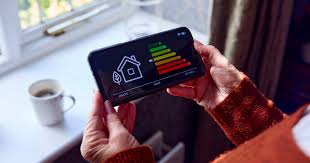In today’s world, where both environmental responsibility and household budgeting are top of mind, energy efficiency has become more than just a nice-to-have—it’s a necessity. Whether you’re looking to cut monthly expenses, reduce your carbon footprint, or simply make your living space more comfortable, focusing on how your home uses energy is a powerful starting point. Many people are surprised at just how much energy and money can be saved with a few smart adjustments.
This guide explores practical and effective strategies to make your home more energy-efficient, from sealing drafty windows to optimizing your thermostat settings. By taking simple steps and making informed choices, you can enjoy lasting benefits that go beyond savings, including improved indoor comfort and a more sustainable lifestyle.
Why Energy Efficiency Matters for Your Home
The drive to save energy is no longer just about lowering costs—it’s a conscious shift towards a sustainable lifestyle and improved well-being indoors. As energy prices fluctuate and environmental concerns intensify, the importance of efficiency becomes increasingly apparent. A well-sealed, thoughtfully managed home supports both your wallet and the planet. Modern households consume more power than ever before due to an abundance of electronics, but thoughtful adjustments can make a real difference for all types of families. To consistently keep your electric bill low, integrating tech solutions with smart habits should become second nature. These practices help ensure affordability and adaptability as seasons change.
Surprisingly, a significant portion of a household’s energy use often gets wasted through unnoticed inefficiencies. According to several estimates, nearly 35% of home energy loss occurs through windows and doors alone, resulting in hundreds of dollars wasted each year. By addressing these trouble spots, homeowners not only make a direct impact on their monthly bills but also create an overall cozier and more stable indoor climate. Individuals and families find that small actions—such as installing a programmable thermostat or switching to energy-efficient lighting—accumulate into sizable gains over time. Therefore, pursuing energy savings is one of the most reliable strategies for enhancing the value of your daily routine and long-term financial stability.
Assessing Your Home’s Energy Use
Understanding where and how your home consumes energy is foundational to making meaningful improvements. Many people are surprised to learn that appliances, heating and cooling systems, and even electronics left plugged in when not in use account for a substantial portion of their utility expenses. A home energy assessment, even a DIY version, offers a snapshot of your energy “leaks.” This means taking a close look at areas such as windows for drafts, doors that don’t have proper seals, and insulation levels that vary from room to room.
For anyone seeking a straightforward and actionable approach, the Department of Energy offers a comprehensive guide to conducting DIY home energy audits. This process is straightforward and includes inspecting insulation thickness in attics or basements, identifying areas where air may escape (such as electrical outlets or plumbing entry points), and monitoring your thermostat temperatures. These audits help you outline a game plan, targeting the most inefficient aspects of your home first so you see benefits quickly. By being thorough in your review, you’ll avoid the frustration of overlooked trouble spots and start building lasting, cost-saving habits.
Smart Thermostat Strategies for Year-Round Comfort
Heating and cooling account for approximately half of the average household’s energy use, according to national data. Smart thermostats and programmable models, therefore, have an outsized impact on both comfort and the bottom line. Using these devices, you can customize temperature settings for different times of day and days of the week, allowing the system to scale back automatically when you’re away from home or asleep. For instance, reducing your winter temperature by 7 to 10 degrees Fahrenheit for just eight hours a night may save you around 10% per year in heating costs.
- Take time to program your device to align with your daily schedule—think mornings, afternoons, and weekends.
- Use the built-in “away modes” during vacations or periods of travel to reduce unnecessary heating or cooling.
- Let the thermostat do its job; minimize manual overrides to maintain efficiency while keeping comfort predictable.
Households frequently report that once a smart thermostat is set correctly, they forget about it, yet still enjoy savings and a more balanced indoor climate. Over time, some thermostats even learn your preferences and adjust automatically based on your historical patterns, further maximizing both comfort and energy preservation.
Sealing and Insulation: The Most Overlooked Energy Savers
Many people are unaware of the strain that small air leaks and inadequate insulation place on their heating and cooling systems. Doors, windows, attic hatches, and even electrical outlets can let conditioned air escape, requiring your HVAC system to run more frequently just to maintain the set temperature. Fortunately, relatively inexpensive solutions like self-adhesive weatherstripping, door sweeps, and spray foam work wonders to block those sneaky drafts.
As highlighted in energy efficiency basics shared by reputable organizations, adding insulation to attic spaces and sealing ductwork consistently delivers strong returns on investment. Improving insulation levels doesn’t just mean lower energy bills—it also means fewer hot or cold spots throughout the house, better soundproofing, and a more resilient structure overall. Homeowners in regions with extreme temperatures particularly notice that their spaces remain comfortable for more extended periods with less reliance on expensive equipment.
Lighting Choices That Make a Difference
Switching to energy-efficient bulbs is one of the fastest ways to save, with a return on investment often achieved in just a few months. Light-emitting diodes (LEDs) not only use about 75% less energy than incandescent bulbs but also last at least 25 times longer, slashing the need for frequent replacements. When lights are left on in seldom-used rooms, however, they can still contribute to substantial energy waste.
- Opt for ENERGY STAR-certified LED bulbs wherever possible for the best blend of brightness and longevity.
- Install sensor switches in garages, hallways, or bathrooms that automatically turn off lights when not needed.
- Arrange furniture and window treatments to maximize daylight, especially during cooler months, to let in warmth and light while reducing the need for artificial lighting.
Consistently updating your lighting not only reduces costs but also enhances the visual appeal and ambiance of your home, ensuring rooms are well-lit and pleasant throughout the day.
Energy-Efficient Appliances: What to Look For
Aging appliances tend to drain more electricity than you’d expect, even when performing basic tasks. Refrigerator compressors, dryers, and water heaters often run inefficiently as components wear down, and outdated models are rarely designed with today’s energy standards in mind. Upgrading to ENERGY STAR-certified products, where possible, can result in significant savings over the appliance’s lifespan—sometimes hundreds of dollars per device.
- Remember to unplug chargers, coffee makers, and entertainment devices when not in use—standby power, often referred to as “phantom load,” can account for approximately 5-10% of your monthly bill.
- Use power strips to control groups of devices and easily switch off entire sections of electronics with one touch.
- Maintain filters in dishwashers, dryers, and heating systems to keep them operating efficiently and extend their valuable life.
Changing how you use your appliances is just as important as the appliances themselves; waiting for a full load before washing clothes or air drying dishes whenever practical maximizes your efficiency gains every day.
Managing Heating and Cooling Without Sacrificing Comfort
The idea of reducing energy use while maintaining comfort can seem daunting, but strategic, low-cost measures make it entirely achievable. Ceiling fans, for instance, enable you to set your thermostat higher in the summer or lower in the winter because they help circulate air more effectively, resulting in a more stable room temperature. Blackout curtains or thermal drapes also block out the sun’s heat or trap warmth inside, letting you rely less on heating and cooling.
- Routinely check air vents around your home to ensure they’re not covered by furniture or curtains, which can disrupt airflow and cause your HVAC to work harder.
- Replace your air filters regularly—dirty filters impede airflow and decrease system efficiency.
- Get professional tune-ups for your heating and cooling equipment at least once per year to catch maintenance issues early.
Those who routinely apply these straightforward tips report steadier bills and more even comfort across all rooms, regardless of season. It’s about finding what works best for your family and your space.
Quick Checklist: Your Monthly Energy-Saving To-Dos
- Inspect for new drafts around windows and doors, sealing as necessary.
- Replace or clean heating and cooling system filters to maintain airflow.
- Reprogram thermostat settings to account for seasonal temperature fluctuations or changes in occupancy levels.
- Unplug infrequently used electronics and chargers.
- Check exterior and security lights for timer or sensor adjustments.
- Review your utility statement for any unusual increases in energy usage.
Adding these checks to your monthly to-do list keeps energy waste at bay and supports a lifetime of savings.
Further Resources for Ongoing Improvements
There’s always more to learn and explore when it comes to home energy efficiency. New technologies, research, and expert recommendations continually evolve the landscape, so it is essential to stay informed. Tinkering with settings, exploring smart home upgrades, and checking for updated rebate programs can all contribute to rising comfort and shrinking bills.
To stay current with best practices, consult resources such as widely recognized government guidance for up-to-date strategies and science-backed advice. A commitment to ongoing improvements ensures that you not only keep your energy expenses under control but also continually enhance your home’s comfort and efficiency year after year.










